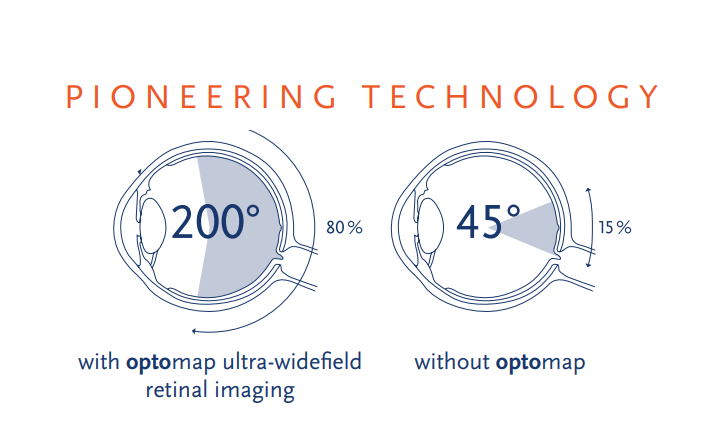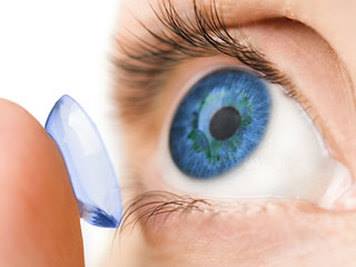Latest Office News
- Details

Optomap is the cutting-edge technology provided here at Ankeny Family Vision Center that allows your doctor to effectively monitor your eye health through ultra-widefield retinal imaging. The view of the retina caught through Optomap’s photos is unmatched, capturing 200◦ or 82% of the retina, versus a traditional retina image which only shows 45◦ or 15% of the retina. Getting an Optomap picture is painless, harmless, and takes mere seconds!
Our doctors use these advanced digital images of your eyes to establish basic eye health and to watch for potential serious eye concerns. While Optomap is often used as preventative eye care, it is also very useful to detect early signs of many eye diseases and other issues that can cause damage to your eyes and vision that routine exams are more likely to miss.
Diabetic retinopathy, age-related macular degeneration, glaucoma (increased eye pressure), high-blood pressure, retinal detachments, retinal holes, and ocular melanoma are just a few of the medical conditions that Optomap can help detect so you and your doctor can create a care plan that is right for you and your health!
While Optomap is not covered by insurance unless deemed medically necessary by your doctor, it is well worth your eye health and peace of mind to choose to get an Optomap picture taken. Ask about receiving one at your next appointment! To schedule, give us a call at 515-964-1671 or click here to schedule online.
Click here if you want to read more about the Optomap technology.
- Details

a prescription, we are constantly looking for ways to inform our patients about the latest in quality product, techniques, and tips.
We have compiled a list of common contact lens mistakes, that most people aren’t aware they are making.
1. Should I rinse my contact lens case with water?
No! Water is not inherently sterile, so rinsing your case with it will open the door to bacteria, possibly leading to infection. Instead rinse your case with contact lens
solution and replace your case at a minimum every six months.
2. Put Lenses in BEFORE you put make up on
Always put your lenses in before you apply makeup and before you remove makeup. Why? This avoids potentially trapping makeup in lenses. This is especially true for those who
wear water proof or oil-based makeup, while not recommended for contact lens wearers, due to risk of makeup binding itself to lenses. Be sure you are applying makeup at the
correct time, as makeup can cause blurring of vision.
3. Ditch Contact Lenses When Under the Weather
Avoid wearing lenses when you are suffering from the cold, flu, or any sickness that causes puffy or read eyes. Why? Chances of eye infection increase when suffering from a
weakened immune system. That is why we always recommend our patients to have an up-to-date pair of eyeglasses to wear in times when Contact Lenses aren’t practical.
4. Contact Lenses shouldn’t be Worn in the Shower
While also true for the pool and ocean, H2O damages contacts. While showering with contacts, lenses will suck up water introducing bacteria into the eye. While water assists
with cleaning your body, you want to avoid bacteria sitting in your eyes all day.
5. Dry your Hands before Contact Lens Application
Many people don’t miss the washing hands step; however, they forget to dry their hands before applying their contact lenses. This common mistake can wreak havoc on your eyes.
Contact lenses are attracted to wet surfaces, hence why they stick to your eye. Wet hands can throw off the application process, and more importantly introduces bacteria into
your eyes. Extra Note: if you haven’t switched out your hand towels in a while, make sure you are drying your hands with a fresh, clean towel.
While the above may be mistakes you didn’t know you were making, never forget these more commonly known techniques. Don’t reuse contact lens solution, don’t clean lenses with
tap water, always wash your hands before meeting lenses, replace contact lenses as directed by our eye care physicians, never sleep with contacts in your eyes, and always see
your vision care doctor for a yearly eye examination.





